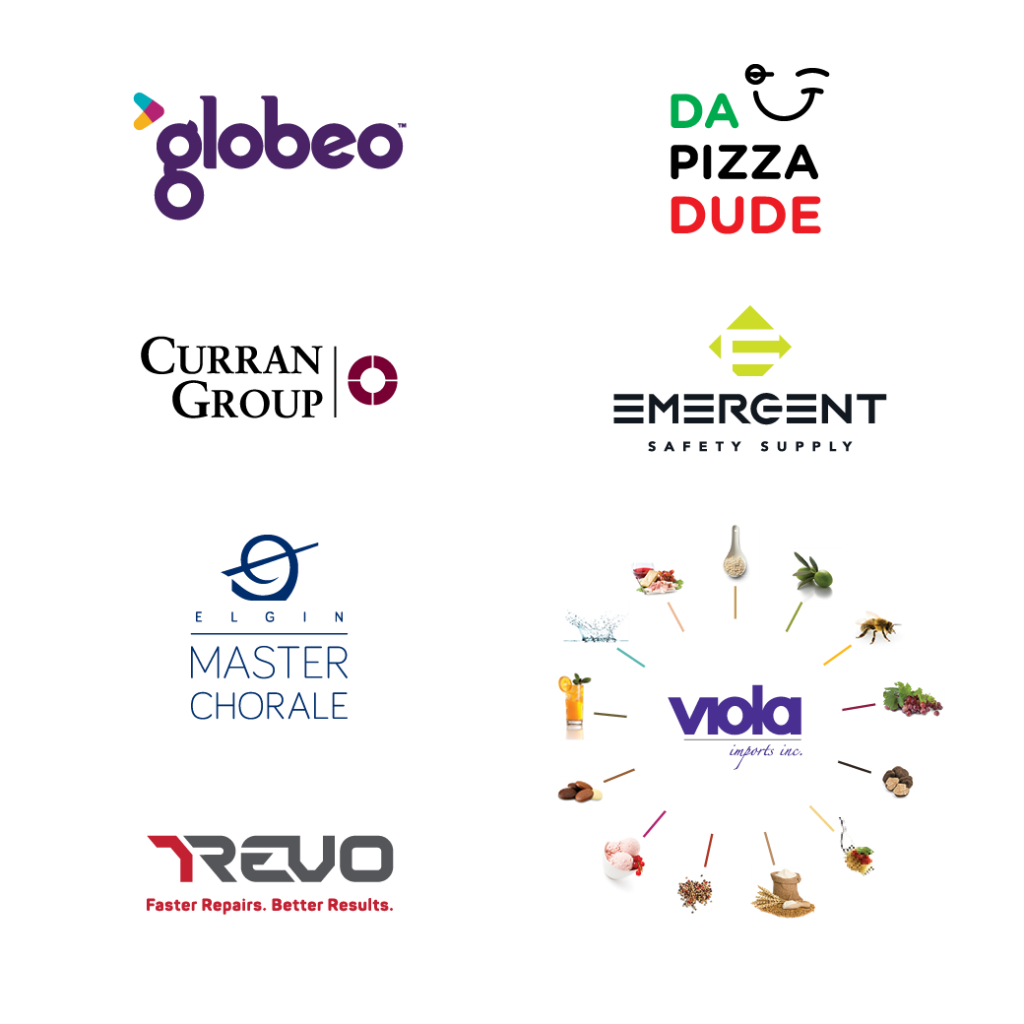
5 Things Your Creative Agency
Needs to Know to Create an Effective Logo
Needs to Know to Create an Effective Logo
The point of a company logo is tied to the purpose of marketing in general. You want people thinking about your product or service. When a consumer or end-user needs something you offer, you want them to remember your company. Every catchy jingle, every company catchphrase—all are aimed at sticking in a consumer’s memory.
A logo is a visual representation of your business, something to remember you by. The creation of this image is a delicate and important process, so communicating clearly with your creative agency will be a great help to you.
Here are 5 things your creative agency needs to know to create an effective logo.
Quick Overview
- What kind of message do you want your design to convey?
- What are the most important visual elements?
- Who is your target audience?
- What makes your company different?
- Where will you be putting your logo? (web, print, etc.)
Intended Message
A logo is so much more than just a flashy image. Your company symbol is a means of communicating your brand to customers:
“Your brand influences your audience’s gut feeling about your product, service or company. You can exert influence by communicating the qualities that make your product or service different.” -The Brand Gap, Marty Neumeier
To begin the process of creating your logo design, you need to ask yourself some important questions to determine direction when communication with your design firm:
- What elements of your business do you want to convey with your logo?
- In 10 years, will this logo still be usable? If not, how much work will it be to redesign and switch out branding?
- How do you want people to feel when they see your logo?
Entrepreneur offers several other questions to consider when talking to a logo designer.
Your design can provide your company’s vision with a visual manifestation. An artist who is aware of your vision can incorporate it into the final design.
Different companies will opt to use their logo to communicate different sides of their business. For example, if you want to be known for quick service, your final logo may incorporate symbols of speed. If you want people to know that your business prioritizes being environmentally-friendly, your design could utilize the color green.
Each element of your logo can help represent important aspects of your business. A good logo designer will want to know everything about the company before attempting to create a design. With that in mind, the best creations will come from designers who have been given a clear view of a company’s vision and focus.
Visual Focus
Brandmarks are a critical component of your organization’s logo. In Designing Brand Identity, Alina Wheeler states that there are five general categories into which brand marks can fall. Here’s what each entails:
- Wordmark. A freestanding acronym, company name or product name designed to convey a brand attitude or positioning. Examples include Google, IKEA, eBay, Pinterest and FedEx.
- Letter form. A logo that is primarily typographic, using a company’s initial or the brand’s first letter. Examples include IBM, Unilever, HP and Tory Burch.
- Emblem. A mark in which the company name is inextricably connected to a pictorial element. In other words, a logo that is a fusion of type and graphics. Examples include TiVo, Crocs and LEED.
- Pictorial mark. A visual representation of a company that attempts to achieve brand recognition without text. Examples include Apple, NBC, Twitter, Polo and Lacoste.
- Abstract/symbolic mark. A symbol that conveys a big idea and often embodies strategic ambiguity. Works best for established and well-known brands. Examples include Chase, Nike, Sprint and Merck.
Each of these options have their own distinct benefits. But if you prefer one over the other, be prepared to explain your thought process to your creative agency. It’s important for them to know as this choice will form the basis of your design.
Target Audience
Most businesses realize that not everyone is a viable customer – and this is a good thing. By narrowing your focus on a very specific target customer, you have a much better chance of converting sales. Being too general is a fatal mistake. Establishing a target audience is necessary for marketing campaigns in general, but it is also helpful for your creative agency.
Consider the fact that a women’s clothing manufacturer will focus on women, while a skateboard manufacturer will likely focus on teens. And these represent just one element of many that will need to be considered in communicating the nature of your brand through your logo!
A set target audience can help your creative agency choose things like colors and symbols as well as the design’s general feel. One audience may call for a more fun, exciting, or even whimsical design, while another demographic may call for a more restrained visual approach. Strategically defining your target audience will make the creative process much more simple.
Point of Differentiation
One of the challenges about running a business is that there are likely other businesses offering the same service as yours. How will you get potential customers to contact your company as opposed to a competing company?
An online retailer selling more or less the same products as another online competitor can differentiate on points like customer service, fulfillment, and overall selection.
Answering this question is the focus of branding and marketing campaigns, but it will also shape your logo. Anything that distinguishes your company from the rest will also help set your design apart from those of other businesses.
Logo Placement
Another important consideration in logo design is where it will go when it’s finished.
Ask yourself (and communicate with your design firm):
- Will it be confined to your website alone?
- Maybe on few business cards?
- Will it make its way onto T-shirts, mugs, and other promotional materials?
The crux of the issue is size and scalability. The image you put on a business card is going to be considerably smaller than the image you put on your company truck. If you want your design on both, however, your visual will have to be scalable. It’s important that blowing up a graphic does not compromise its quality. It’s one thing if you plan to affix your logo to smaller places like on business cards or a website. But if you want your design on something bigger, like a t-shirt or poster your creative agency will need to know during the design process.
Besides size, dimensions and resolution are important. A square logo will fit differently on a website, business card, etc. than a circular or rectangular logo. It may make sense to have multiple versions of your logo for different types of implementation. Resolution may also change depending on the medium where your logo will end up. Web and print standards are quite different in regards to images.
Choosing a company logo is a vital step for your business branding. The image you choose will become synonymous with your company and evoke certain emotions when viewed by customers. Creating your image will require a lot of serious thought, creativity, and hard work, but the process is quite rewarding! If you effectively communicate these 5 things your creative agency needs to know to create an effective logo, you will be well on your way to crafting a logo that stands the test of time.
Visit our website to learn more about how Blu Sky Creative can design your next logo!




